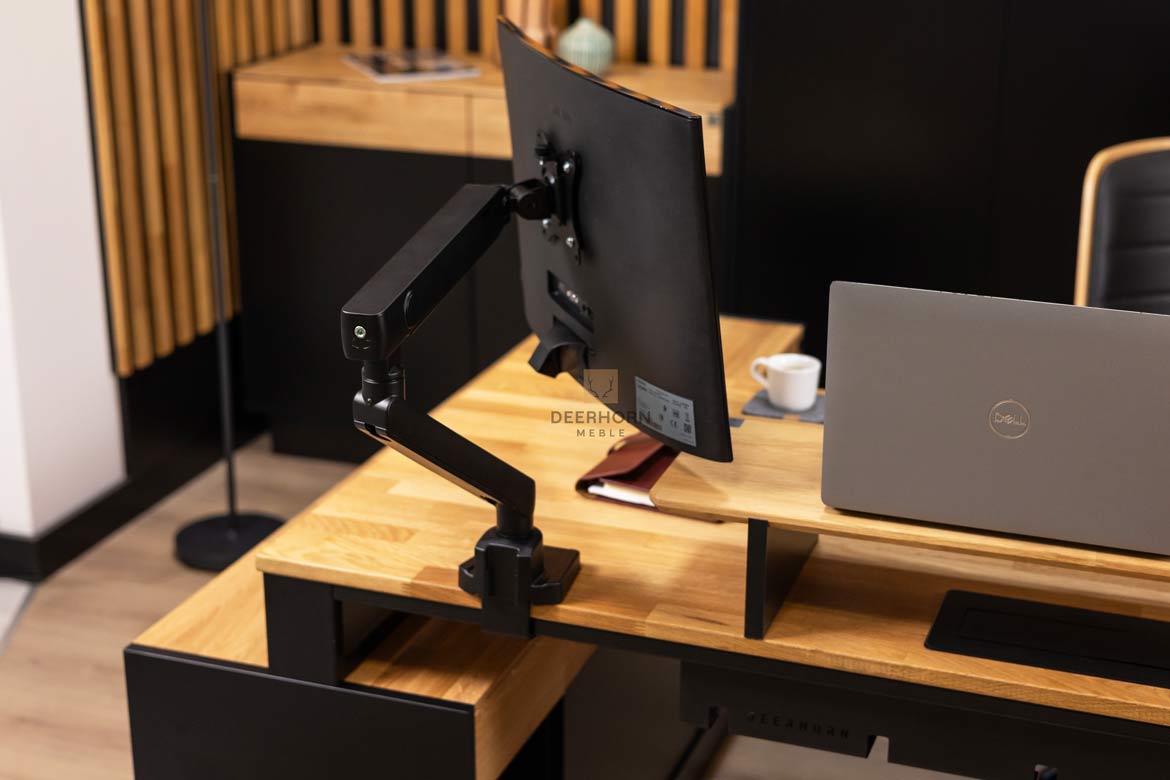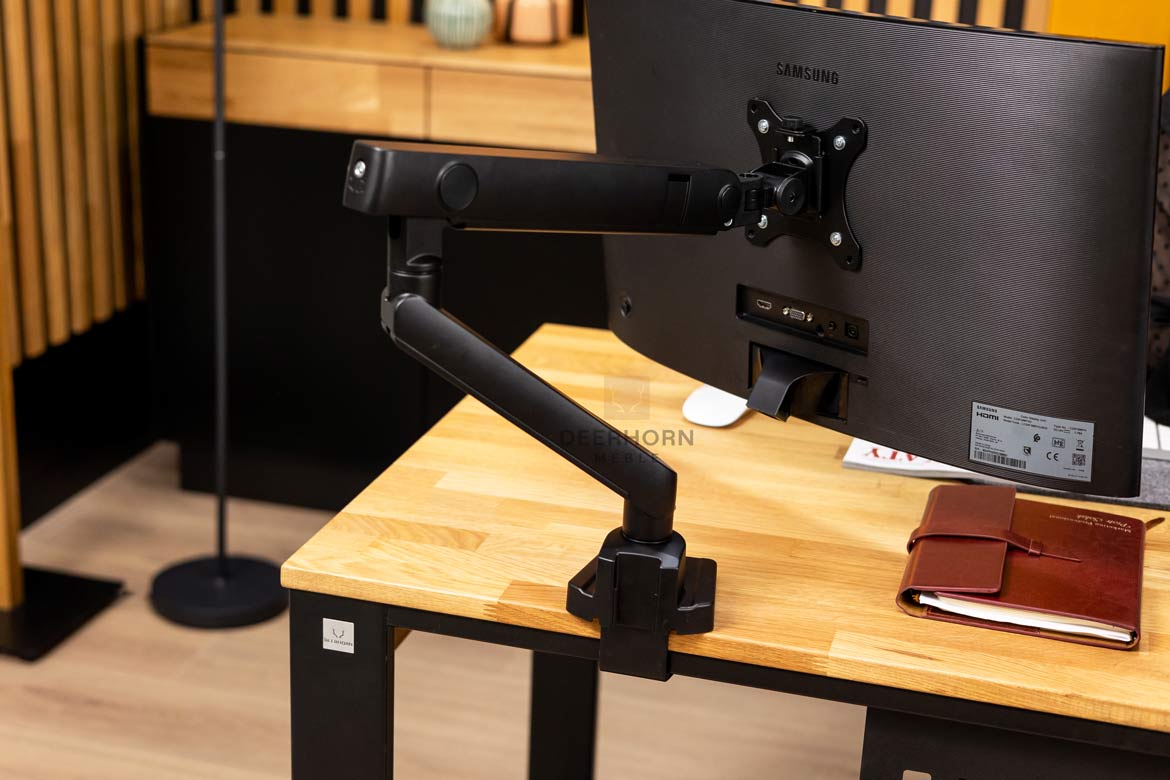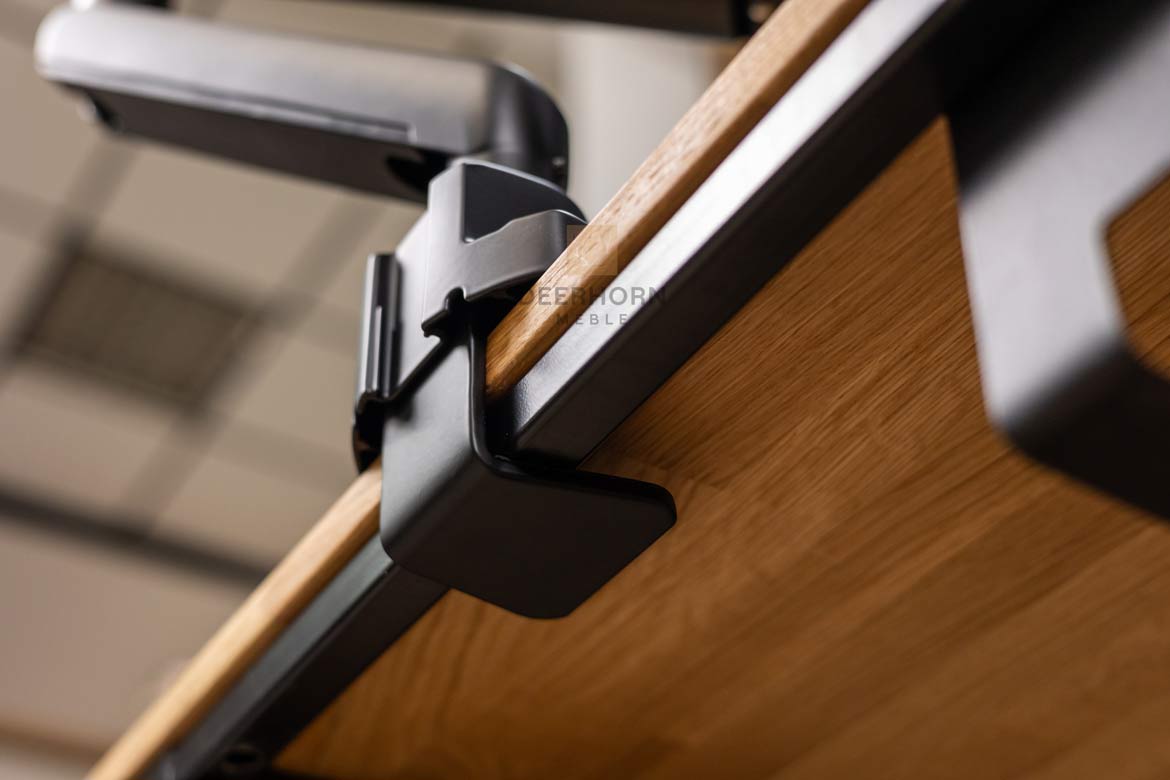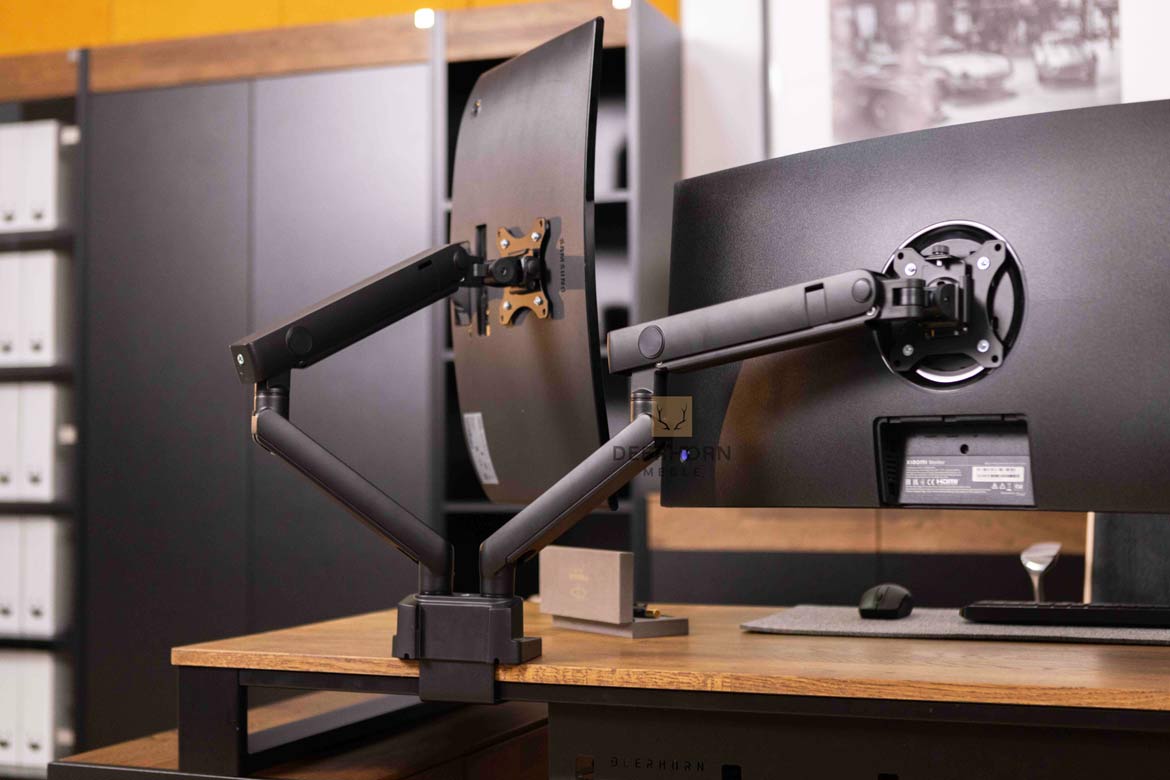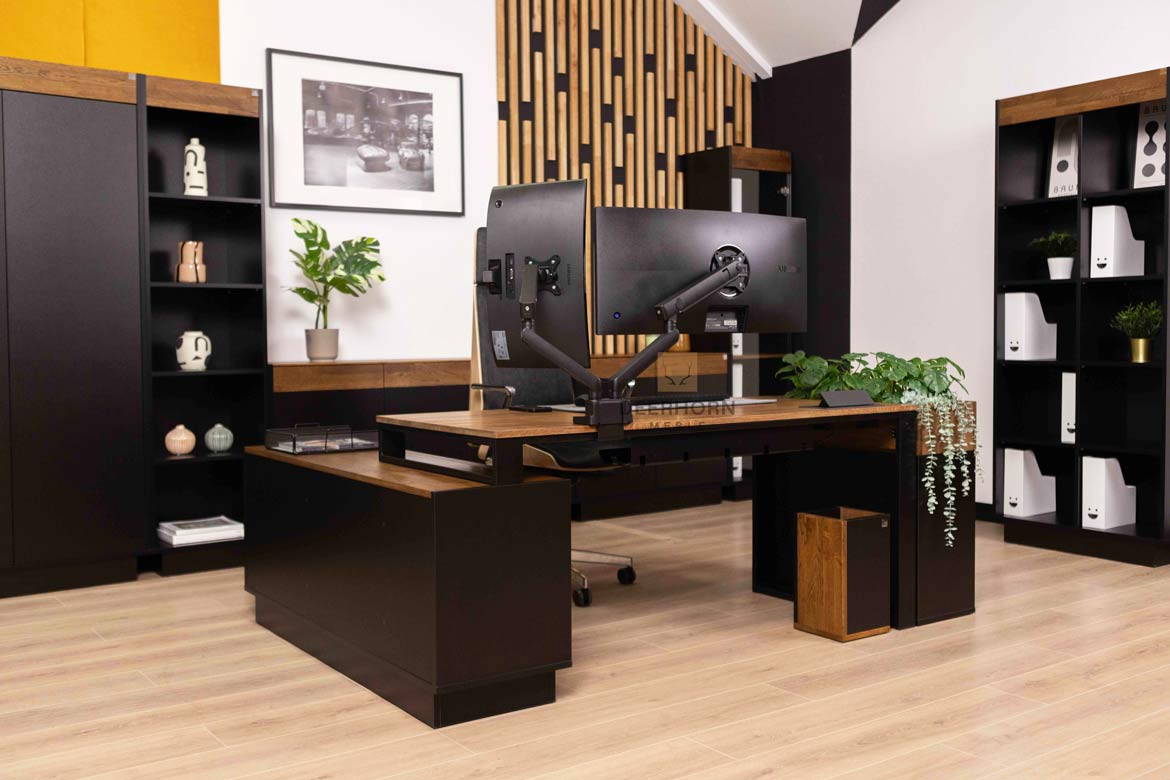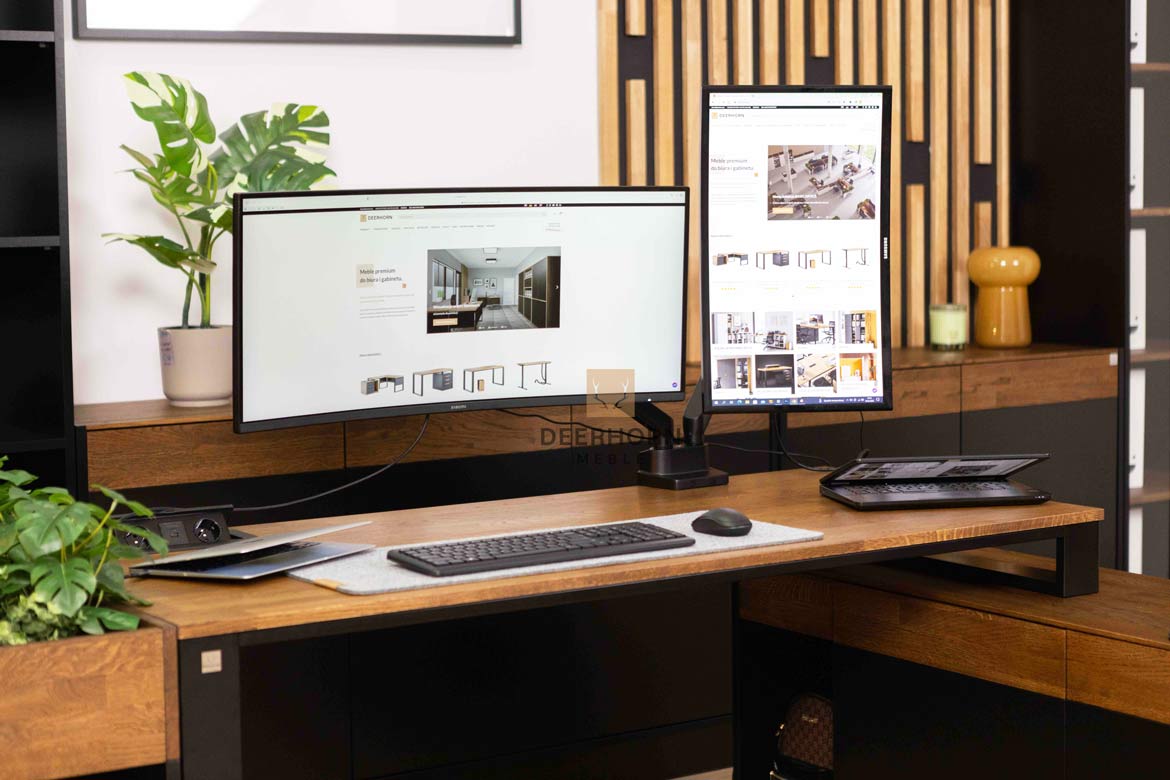Your cart is currently empty!
A desk with one or two monitors – which solution is better?

Choosing the right workstation is of great importance for comfort and efficiency. More and more people are wondering whether it is worth it to work on two monitors, but one screen is enough. If you have a similar dilemma – you’ve come to the right place! In this article we will analyze the advantages and disadvantages of both solutions to help you make the best decision.
Working on a single monitor – for what tasks?
One screen is a classic solution that works in many situations. If you mainly use a browser, an office suite or email, a single monitor will do just fine. It takes up less space on your desk, is cheaper and doesn’t require additional setup.
For many people, this is a convenient option, especially if their work doesn’t require constant switching between applications. Fewer screens also mean fewer cables and simpler space organization. If you have limited desk space or appreciate minimalism, a single monitor will be a practical choice.
Advantages of a single monitor:
- more desk space
- lower purchase and operating costs
- fewer distractions and simpler workflow
Disadvantages of a single monitor:
- limited workspace
- more clicking and scrolling
- greater eye fatigue
But… is one screen always enough?
Working on two monitors – is it necessary?
Two monitors mean more workspace and greater convenience – especially for people who frequently switch between different applications, work on multiple files simultaneously, or do graphics, programming or data analysis. You can have your main application open on one screen and notes, instant messaging or reference documents on the other.
Such a solution allows better organization of work and saves time by eliminating the need to constantly minimize and maximize windows. It also facilitates multitasking – for example, during a videoconference, you can simultaneously take notes or view needed files. In addition, a larger workspace helps reduce eye fatigue, as it reduces the need to frequently focus your eyes on small elements or scroll through long documents.
Advantages of two monitors:
- Greater efficiency and faster operation
- Ability to better organize workspace
- Less eye fatigue – less switching between windows
Does this solution have drawbacks? Of course – it requires more desk space, a higher budget and a good organization of the workstation to make the setting ergonomic.
What desk will work best with two monitors?
If you decide to have two monitors, choosing the right desk is crucial. First of all, pay attention to its width – it should be at least 140 cm, so that the two screens can stand side by side at a comfortable distance. If you use large monitors, consider a desk with a width of 160 cm or more.
The second important issue is the depth of the tabletop – the best is 70-80 cm, so that monitors are not too close to the eyes and provide comfortable space for the keyboard, mouse and additional accessories. A desk that is too shallow can result in an unergonomic positioning of the hands and a lack of space for free movement, which will affect working comfort.
A well-chosen desk will make working on two monitors not only comfortable, but also more efficient!
So which solution to choose?
The final choice depends on your work style. Two monitors are great if you frequently switch between applications, analyze data or create content – they provide better organization and convenience. One screen will work well if you value simplicity, have limited space or don’t need an additional work surface.
Regardless of your choice, ergonomics is key – a well-chosen desk, proper monitor height and comfortable screen positioning all affect your comfort and health while working. If you use two monitors or want to better utilize your desk space, it’s worth considering monitor mounts. They allow you to adjust the height and angle of your screens, which helps maintain proper posture and reduces strain on your neck and back. In addition, mounts free up space on the tabletop, making your workstation more organized.
Read more: Ergonomic workstation – myth or revolution at work?
